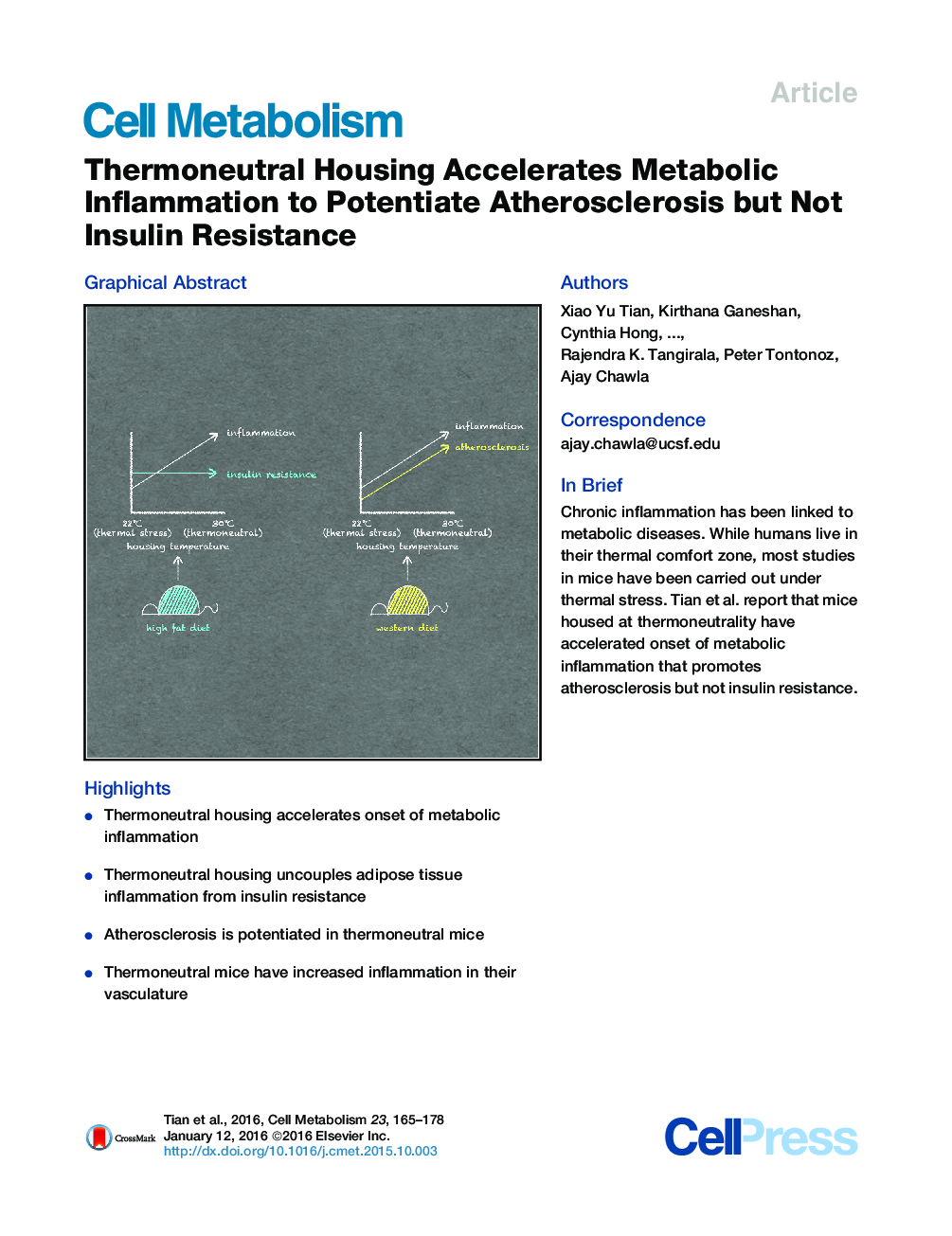| Article ID | Journal | Published Year | Pages | File Type |
|---|---|---|---|---|
| 2792584 | Cell Metabolism | 2016 | 14 Pages |
•Thermoneutral housing accelerates onset of metabolic inflammation•Thermoneutral housing uncouples adipose tissue inflammation from insulin resistance•Atherosclerosis is potentiated in thermoneutral mice•Thermoneutral mice have increased inflammation in their vasculature
SummaryChronic, low-grade inflammation triggered by excess intake of dietary lipids has been proposed to contribute to the pathogenesis of metabolic disorders, such as obesity, insulin resistance, type 2 diabetes, and atherosclerosis. Although considerable evidence supports a causal association between inflammation and metabolic diseases, most tests of this link have been performed in cold-stressed mice that are housed below their thermoneutral zone. We report here that thermoneutral housing of mice has a profound effect on the development of metabolic inflammation, insulin resistance, and atherosclerosis. Mice housed at thermoneutrality develop metabolic inflammation in adipose tissue and in the vasculature at an accelerated rate. Unexpectedly, this increased inflammatory response contributes to the progression of atherosclerosis but not insulin resistance. These findings not only suggest that metabolic inflammation can be uncoupled from obesity-associated insulin resistance, but also point to how thermal stress might limit our ability to faithfully model human diseases in mice.
Graphical AbstractFigure optionsDownload full-size imageDownload high-quality image (216 K)Download as PowerPoint slide
